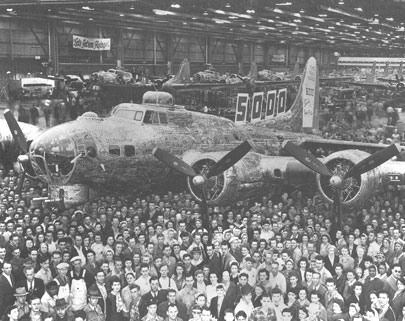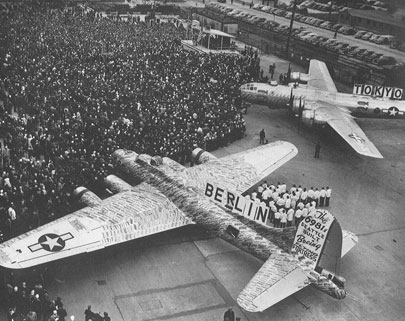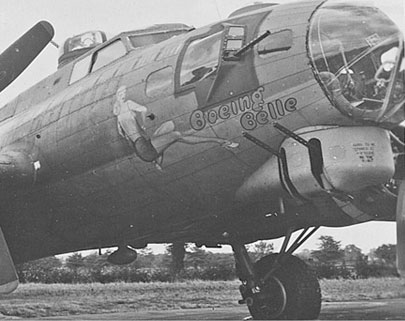THE BOEING STORY
During World War II, Boeing and its partners worked together to produce a staggering 98,965 aircraft, including the famed B-17 “Flying Fortress.” Representing nearly 28 percent of America’s total aircraft production, Boeing proved a principal contributor to industrial production during the war. These planes helped guarantee victory for Allied forces and served as a symbol of American might and innovation.
Today, The Boeing Company shares The National WWII Museum’s commitment to preserve and honor the legacy of service, sacrifice and leadership of the men and women who served our country in uniform and the thousands of Home Front workers who were integral to Allied victory in World War II.
The US Freedom Pavilion: The Boeing Center was made possible in part from a $15 million gift from The Boeing Company. The generous support of The Boeing Company also allowed the acquisition and restoration of the World War II B-17, “My Gal Sal.”
The Boeing Company in World War II
Exemplifying the wartime slogan, “We are all in it together!” Boeing took the lead in cooperating with other important aviation companies during World War II, including Douglas Aircraft, McDonnell Aircraft, North American Aviation and the Hughes Aircraft Company, to organize the aviation industry into maximum production. Douglas produced the C-47 Skytrain and SBD Dauntless; North American built the B-25 Mitchell and P-51 Mustang; McDonnell manufactured 7 million pounds of aircraft parts; and Hughes produced parts including subassembly wings, rear fuselage and ammunition belts. By the end of the twentieth century, all of these wartime partners would be consolidated by The Boeing Company.
Cooperation, not competition, was the key element fostered by Boeing’s leadership — to build the most possible and best quality airplanes in the shortest timeframe to meet the wartime emergency need. At Boeing, production went from 60 B-17s a month in 1942 to 362 a month in 1944.
Boeing’s products allowed American airmen to best their Axis foes in battle. Control of the skies allowed the Allies to protect American sailors and soldiers below, bring the war to the homelands of Italy and Germany and set the stage for the invasion of Europe which ultimately brought down the Third Reich. Air superiority also ensured the ability to cross the Pacific island by island — bringing the war to the Japanese homeland.
The Boeing Company Today
After the war, The Boeing Company returned to the business of transporting goods and passengers. The momentum from the war effort served to launch the company’s tremendous postwar advances in aerospace technology, including the computerization of planes and – as the nation rebounded and expanded — introduction into a global marketplace.
Headquartered in Chicago, today Boeing is the world’s largest aerospace company and manufacturer of commercial jetliners and military aircraft. The Boeing Company continues to be an innovative leader in aircraft production, serving more than 90 countries around the world.






